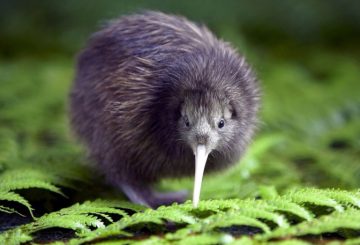Ang mga taong nasisiyahan sa panonood ng Aurora ay ginagamot sa isang hindi inaasahang maliwanag na display na nag-iilaw sa kalangitan. Nakuha ng mga litratista ang mga ilaw hanggang sa hilaga hanggang sa Bay of Plenty.
Ayon sa Space Weather Prediction Center ng gobyerno ng US, napansin ng kanilang mga instrumento ang mga pagbabago sa geomagnetic field hanggang sa antas ng G4 sa kanilang sukat sa gabi mula Sabado hanggang Linggo (oras ng New Zealand). Ang antas na ito ay sapat na mataas upang makita mula sa ilang mga populasyon na lugar. Ang sukat ay mula isa hanggang lima, na may isa ang pinakamababa at lima ang pinakamataas.
Nagbahagi ng mga litratista ang mga larawan ng mga makukulay na ilaw hanggang sa hilaga hanggang sa Nelson, Wellington, at Tauranga. Ang mga ilaw na ito ay madalas na maitala ng mga camera kahit na hindi sila makikita gamit ang hubad na mata.
Ang isang litratista na si Belle, ay nakakuha ng ilang mga kamangha-manghang mga shot ng Southern Lights mula sa Springston, timog ng Christchurch, ilang sandali bago ang 3 ng umaga noong Sabado. Bumangon siya nang maaga para sa isang airport trip. Ang kanyang mga anak, na anim at apat na taong gulang, ay nasisiyahan sa makita ang mga makukulay na ilaw sa pamamagitan ng camera ng telepono.
Ang isa pang litratista, si Nick Keizerwaard, ay pinanood ang display mula sa Lake Henry sa Te Anau. Sinabi niya, “Sa palagay ko walang sinuman ang inaasahan na lumabas ito kasing malaki tulad ng ginawa nito. Nakikita mo nang maaga sa gabi na may kaunting kapangyarihan at mga kulay na nakikita ng hubad na mata; ngunit talagang tumaas ang mga bagay sa paligid ng 1.30 ng umaga.”
Idinagdag ni Nick na ang pag-aaral na mag-litrato ng Aurora ay mahirap, dahil kailangan mong patuloy na ayusin ang mga setting ng iyong camera upang makuha ang mabilis na gumagalaw na target.
Nagawa rin ni Emma Jenkinson na makuha ang mga geomagnetic light nang maaga noong Sabado. Kinuha niya ang kanyang mga shot noong 2.30 ng umaga sa Halfmoon Bay sa Rakiura – Stewart Island.
Nai-post ng US Space Weather Prediction Center na habang mas maraming geomagnetic activity ang inaasahan nang magdamag hanggang Linggo, inaasahan lamang itong maabot ang G1 – hindi sapat na mataas para masasak ang mga aurora hunter.





























































